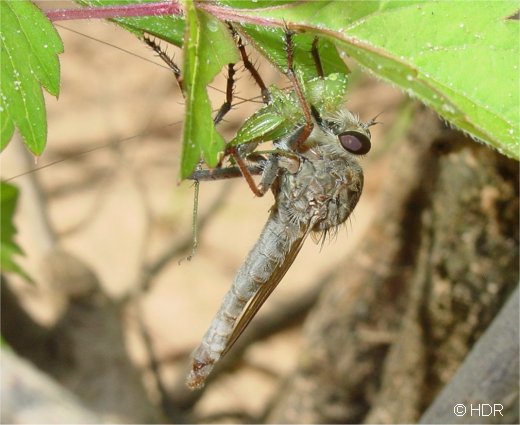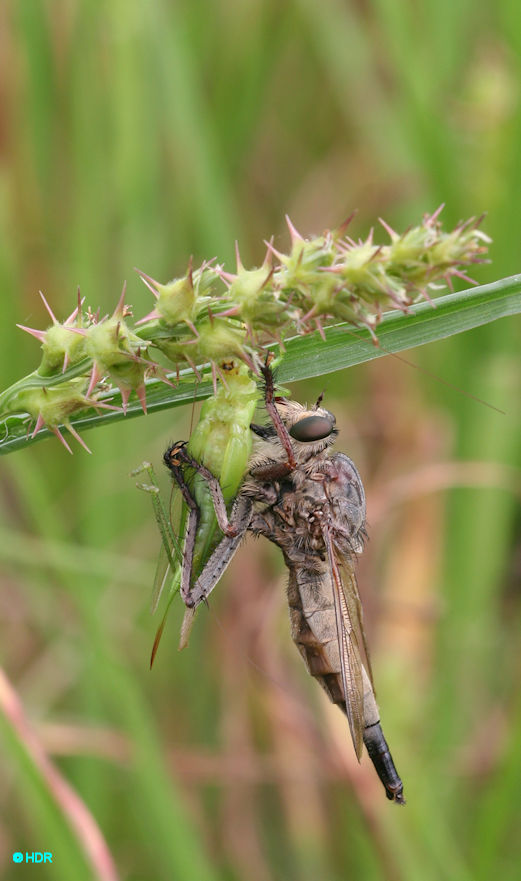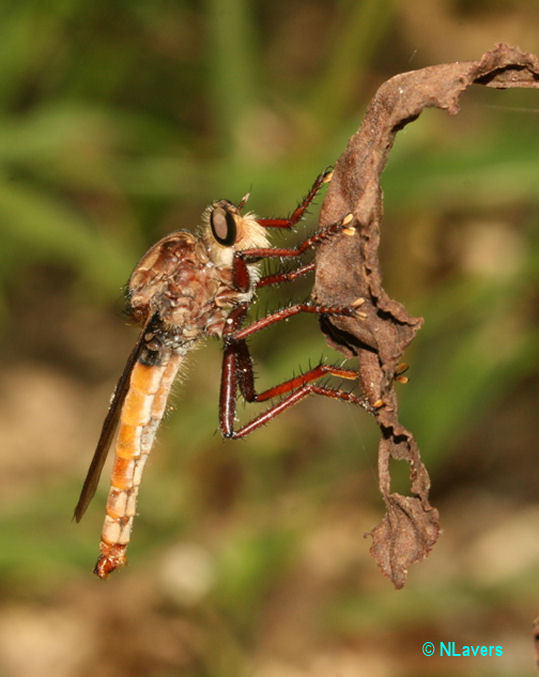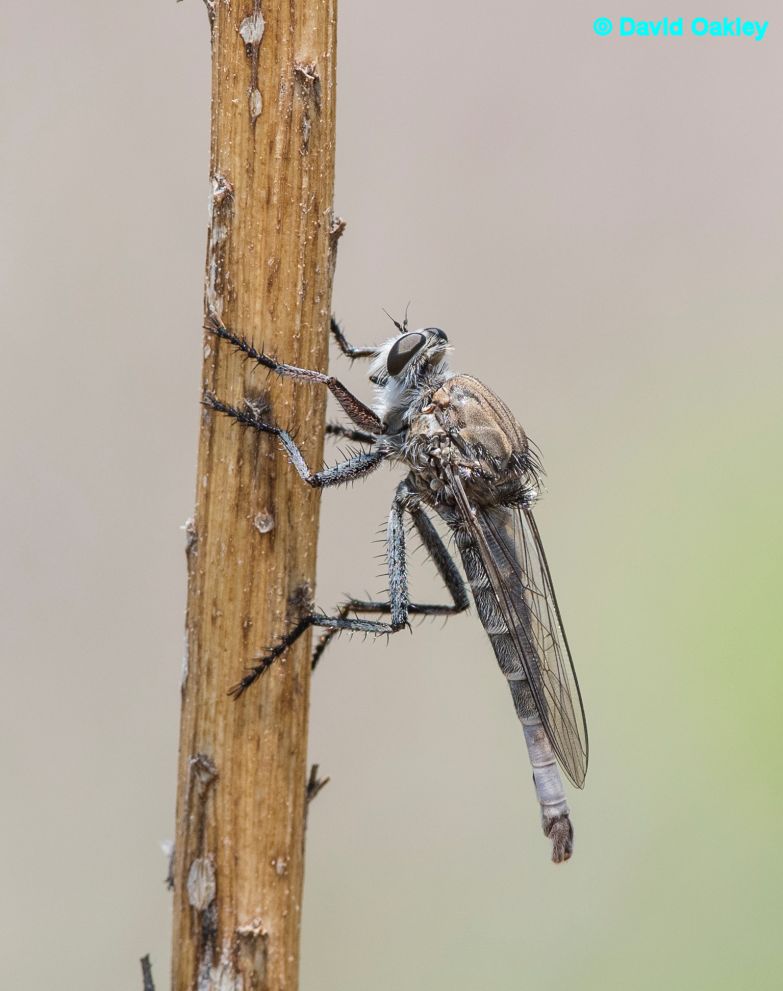|
|
|
The Proctacanthus species are large and aggressive robbers. Some appear to be the most aggressive feeders we have, right up there with the vicious Promachus. Butterflies seem to be a favorite food of the larger members of this genus. This is Proctacanthus duryi and it is a medium length, pale, apparently sand-loving species. So far I have only found it on river sand but who knows. This is a male. We currently have seven species of Proctacanthus with nine in OK. |
|
|
|
A P. duryi with a katydid kill. Note those impressive hopper antennae shooting off to the left. This was taken on the sand flats at the river as well. |


















